Many speak of Bowling Green's beauty while visiting. They appreciate our green spaces and gardens. They feel as though they can disconnect from their busy lives and marvel over our views. Many of these beautiful spaces didn't happen by chance but by the planning and deliberate actions of our beloved citizens. In honor of Women's History Month, we want to brag on one of our very own, Ruth Rabold. Keep on scrolling to discover Ruth's dedication to beauty and to participate in the Ruth-inspired, self-guided tour.
We want to provide many thanks to R. Nicholas Rabold and the Landmark Association for the article, information and photos displayed in this post.
Ruth Rabold believed in beauty. And she dedicated her life to it. Born Ruth Evelyne Fuller in January of 1901, she was raised in Trenton, Tennessee, before moving to Bowling Green around 1920. There, she married Earl David Rabold, a member of one of Bowling Green’s “prominent old families” dating to the earliest period of our town’s history. Having secured herself a place in society, Ruth’s life as “The Mrs. Rabold” began—and she quickly earned herself a reputation as Bowling Green’s premier aesthete, in particular with regard for her appreciation and knowledge of fine gardens.
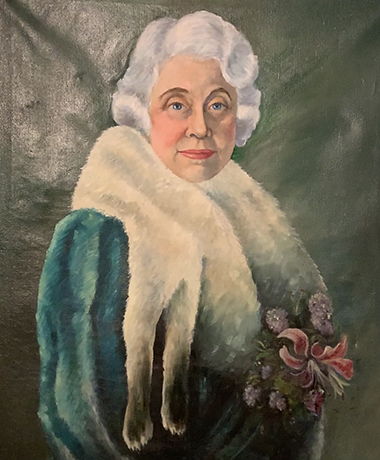
Indeed, Mrs. Rabold helped found the Garden Club of Kentucky in 1931 and the Bowling Green Garden Club in 1935. In the same period, Mrs. Rabold recruited James Maurice Ingram—perhaps Bowling Green’s greatest, or at least its most prolific, architect—to build what has become known as “The Rabold House.” There, Mrs. Rabold first demonstrated her horticultural prowess with a garden built across four terraces, including multiple patios, two ponds, a semi-sunken garden, and a gazebo. The grounds contain the most unique and by-far the longest continuously cared for private garden in Bowling Green.
Barely 30 years old, in 1934, Mrs. Rabold persuaded R.S. Sturtevant to help her restore Bowling Green’s Fountain Square Park, implementing a more formal, elegant planting plan—including space for seasonal floral displays. The same year, Mrs. Rabold was elected President of the Bowling Green Garden Club, serving from 1934 to 1936—federating the club in 1935—before returning as President in 1938. She served as the President of the Garden Club of Kentucky from 1937 to 1939—and the only president from Bowling Green until 1987.
Mrs. Rabold was remarkably well-traveled, but, by the time of her election as President of the Garden Club of Kentucky, she felt she had exhausted domestic sources of inspiration. Accordingly, the Rabolds booked passage from New York to England on the R.M.S. Queen Mary, boarding on June 23, 1937. Her diary entry for the day notes “[a]t last, the day of days has arrived . . . the celebration is terrific.”
Upon arrival in England, the Rabolds studied the Kensington Palace Gardens; Royal Botanic Gardens, Kew; Lancelot “Capability” Brown’s landscape garden Blenheim Palace; and even William Shakespeare’s garden at New Place. Upon crossing the English Channel, the Rabolds went on to tour numerous continental gardens. One, of course, being Mrs. Rabold’s favorite—“Versailles is . . . gorgeous beyond description . . . [and] poignantly connected to the story of Marie Antoinette.”
Mrs. Rabold returned to Bowling Green with a new, French wardrobe and a custom-order red Renault. She immediately implemented her bourgeoning continental knowledge and style in houses and gardens throughout Bowling Green and Kentucky—purportedly even conferring briefly with Umberto Innocenti and Richard Webel in 1939/40 during their work at Keeneland.
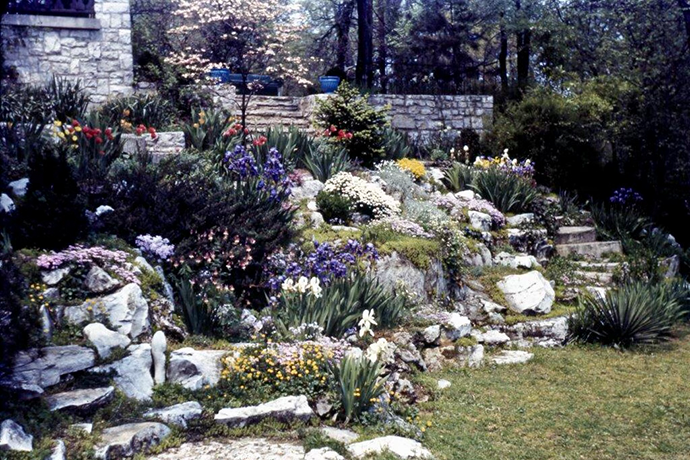
The war years were dark, as the national effort and necessary rationing made gardening a low priority. By the 1950s, however, Mrs. Rabold was gaining national attention. On March 20, 1957, Estelle Jackson of the Louisville Courier Journal recorded, with regard to the gardens at The Rabold House alone, “Mrs. Earl D. Rabold of Bowling Green, who laughs herself off as an amateur, has a green thumb that one professional estimated as being worth $30,000.” At that time, Mrs. Rabold served as the landscape-design chairman for the Garden Club of Kentucky’s Dogwood Region. By the 1960s, Mrs. Rabold was “a member of the project committee of the National Council of Garden Clubs[, a] master judge of flower arrangements and one of four national landscape design critics in Kentucky . . . .[She was] also a past president of the Bowling Green Music Club and the Bowling Green Woman’s Club.”
By the 1970s, Mrs. Rabold was the embodiment of a living landmark, accepting gifts and awards on behalf of the City of Bowling Green and serving as a role model for countless young women of the time. As for her work, Mrs. Rabold made clear that “I’d like to quit while I’m still in demand.”
Demand for Mrs. Rabold, however, never stopped. So, she continued working, in particular by philanthropy and through the City Government. She was instrumental in the founding of the Bowling Green Beautification Commission (Parks and Recreation) and the Hobson House Museum—Riverview at Hobson Grove. She was one of the earliest donors to the Landmark Association of Bowling Green and Warren County and donated funds for the 1980s restoration of the Capitol Arts Center on the Downtown Square.
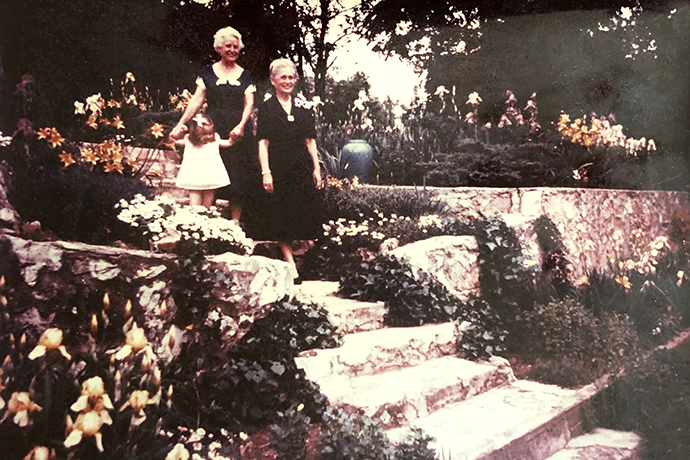
In recognition of her “many contributions and achievements” for the City of Bowling Green, then-Mayor Harold A. Miller named September 2, 1982 “Ruth Rabold Day.” A plaque at the Main Street entrance to Fountain Square Park—directly in front of the Barclay-Rabold Building—commemorates the community’s appreciation for Mrs. Rabold’s six decades of public service. The Bowling Green Ruth Rabold Garden Club was founded in her honor.
Mrs. Rabold died in December of 1986. Her legacy of beauty can today be most notably enjoyed at Riverview at Hobson Grove, Bowling Green’s only house museum, and Fountain Square Park—both of which incorporate her ubiquitous mixture of wrought and cast iron. Her chief protégée, M. Mitchell Leichhardt, designed the gardens at the Baker Arboretum—implementing many of the same design tactics he learned with Mrs. Rabold at The Rabold House. The Rabold House is still owned by the family, who opens the gardens to the public annually through events hosted by her charitable organizations and clubs.
Written by R. Nicholas Rabold on behalf of the Landmark Association of Bowling Green and Warren County.
Information and cited sources on file with the author.
THE RUTH RABOLD-INSPIRED SELF-GUIDED TOUR
Feeling inspired by Mrs. Rabold? Of course you are! Check out a few places around Bowling Green and Warren County that she designed, inspired, built and/or funded. We all want to be Ruth when we grow up.
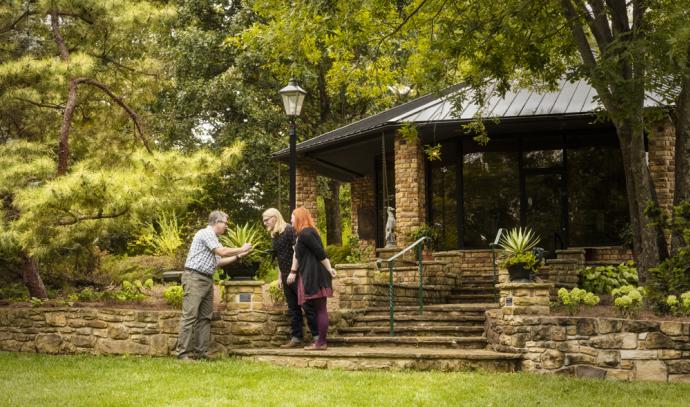
Baker Arboretum | Ruth Rabold's chief protégée, M. Mitchell Leichhardt, designed the gardens at the Baker Arboretum - implementing many of the same design tactics he learned with Mrs. Rabold at the Rabold House. Explore the arboretum. The collection features more than 600 species and 1200 varieties or cultivars, the Baker Arboretum explores the vast palette of plants that can grow in western Kentucky. Visitors are also invited to visit for free the Downing Museum at the Baker Arboretum, featuring works of world-renowned artist Joe Downing.

Fountain Square Park | Spend time in historic downtown Bowling Green and enjoy Fountain Square Park. The city of Bowling Green, then-Mayor Harold A. Miller, named September 2nd, 1982 "Ruth Rabold Day." A plaque at the Main Street entrance to Fountain Square Park commemorates the community's appreciation for Mrs. Rabold's six decades of public service.
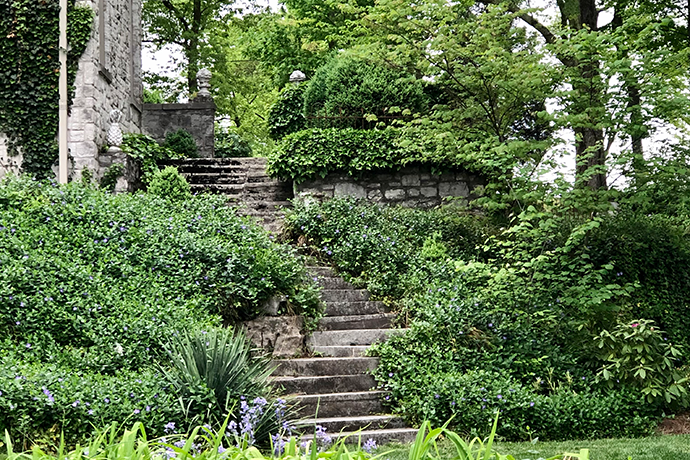
The Rabold House | Ruth Rabold's private residence is still owned by the family and open to the public annually through events hosted by the Bowling Green Garden Club. Follow their Facebook page for the latest on event updates.
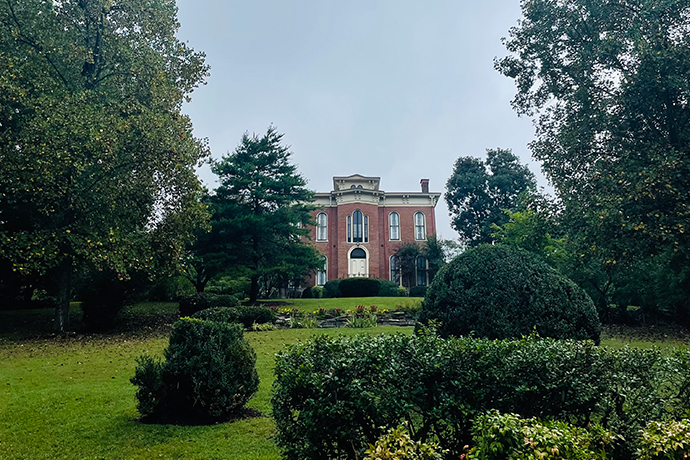
Riverview at Hobson Grove | Ruth Rabold was instrumental in the founding of the Hobson House Museum - Riverview at Hobson Grove. Explore the grounds and take a tour of the home. There is a disc golf course that may also be enjoyed surrounding the home.
Stay in the know on all things Bowling Green by subscribing to our monthly e-newsletter. Need help planning your next BG adventure? Request a Visitors Guide.


